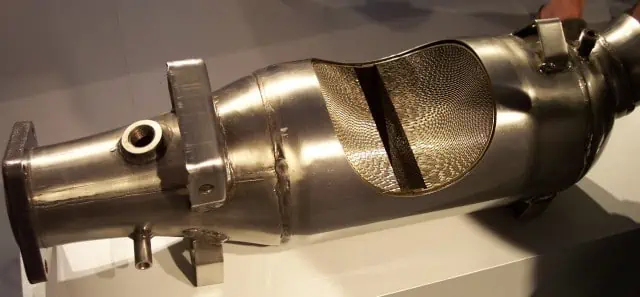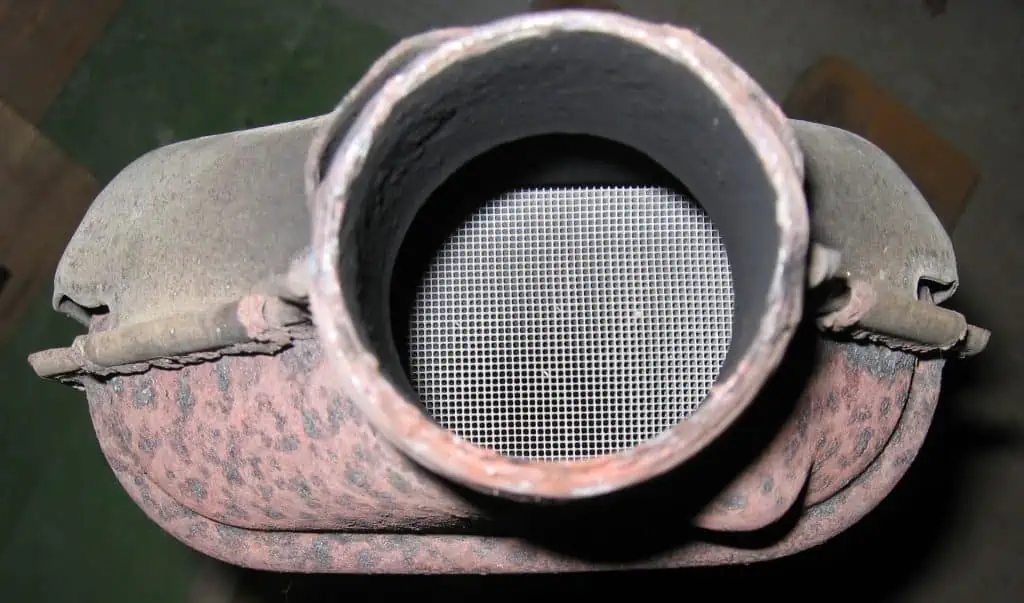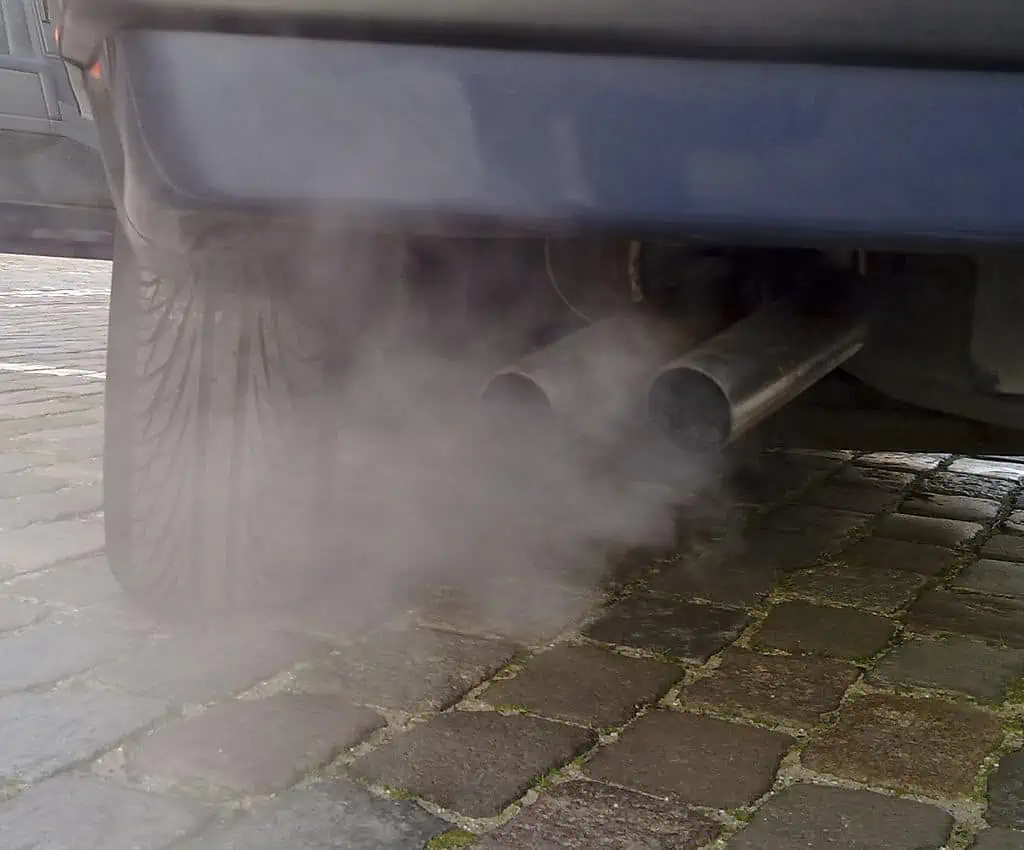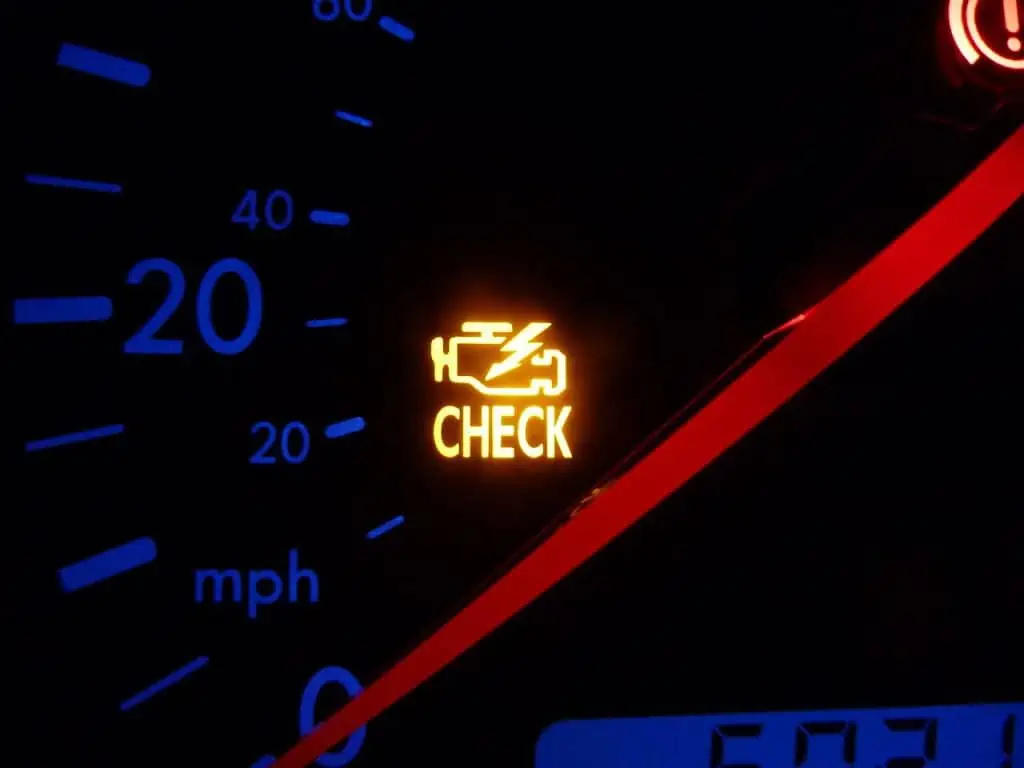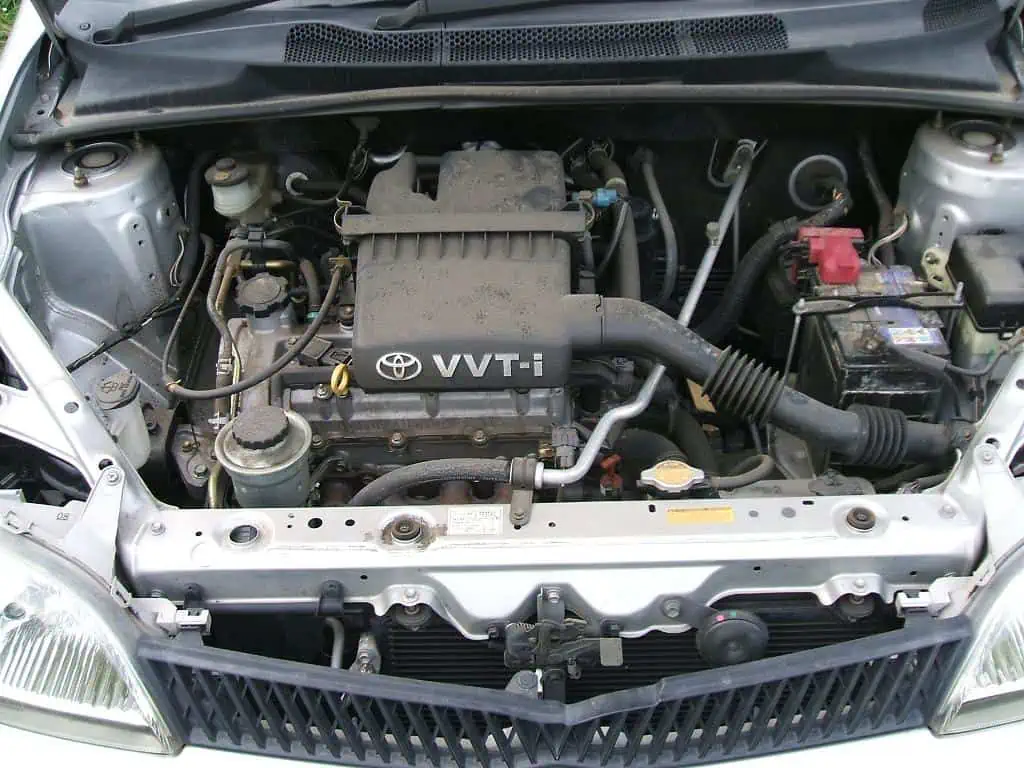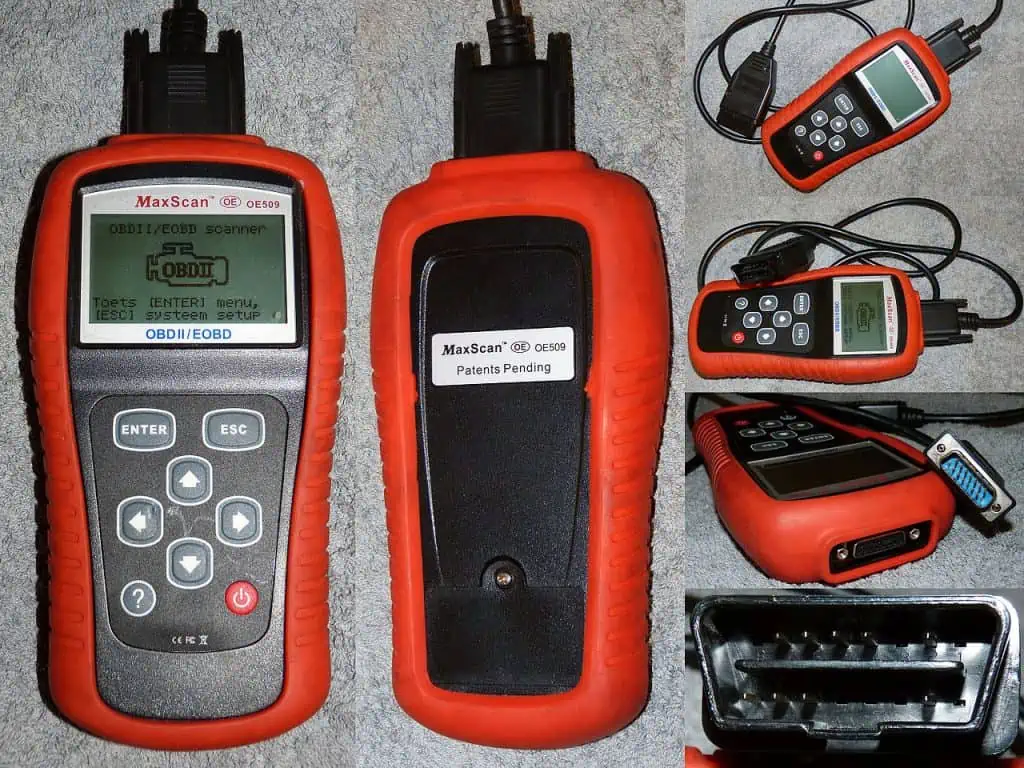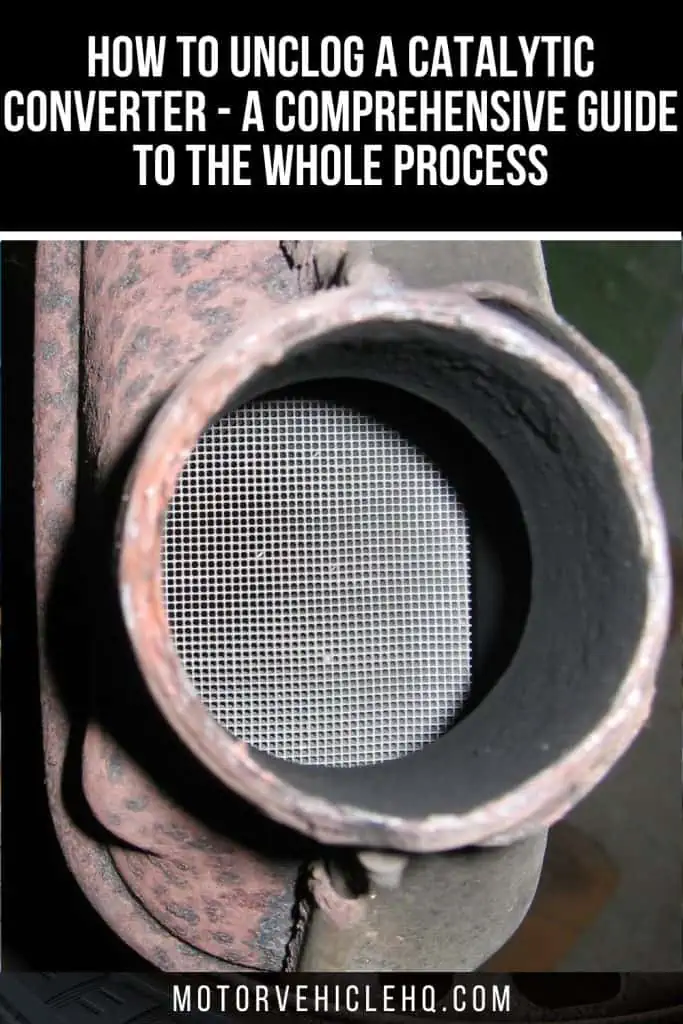Do you have a check engine light on? Does your vehicle feel slow and is your fuel efficiency declining? Your catalytic converter appears to be clogged, which is a major problem that needs to be fixed.
You are looking for information on how to unclog a catalytic converter which is why you are reading this. You should probably prepare for a blocked catalytic converter once you start driving a car with an internal combustion engine. How come?
In essence, catalytic converters turn harmful exhaust emissions into “safer” gases. It won’t take long for the exhaust to become clogged because so much smoke travels through it.
A catalytic converter aids in reducing the environmental impact of automobiles. By accelerating a redox process, a catalytic converter regulates the exhaust emissions from an internal combustion engine. Catalytic converters were declared a requirement for American-built automobiles by the EPA in 1975.
Catalytic converters are a crucial component of your car’s system. Without them, you would have a far larger carbon footprint and your automobile would never be able to pass its emissions test. Between the engine and the muffler in the exhaust system is where you’ll locate the converter.
The information you are about to read will teach you how to maintain your catalytic converter at peak performance. Read on!
A Catalytic Converter: What Is It?
A piece of machinery fitted in an internal combustion engine’s exhaust system is the catalytic converter. It has a honeycomb structure inside and a box form.
Its principal responsibility is to reduce the toxicity of all the gases and pollutants produced during combustion.
The catalytic converter’s goal is to reduce the amount of smog and other harmful pollutants that the car emits into the environment and our bodies.
A catalytic converter helps minimize the negative effects of automobiles on the environment. A catalytic converter controls the exhaust pollutants from an internal combustion engine by quickening a redox process.
mainly because we breathe in these gases, which have a variety of negative effects on our bodies. Specifically, they can spread a variety of diseases that can result in premature death.
In the end, a damaged catalytic converter could result in catastrophic engine failure. Therefore, it makes sense to resolve this matter quickly. Think of your car as being choked and unable to effectively expel the gases from the exhaust pipes. The exhaust may crack as a result of pressure.
Overall, it may cause the engine to lag. In a truck, it can serve as an exhaust brake, but you don’t want that in your automobile. Since vehicle engines are insufficient and cannot withstand the same amount of pressure as a diesel truck,
It’s not always necessary to buy a new catalytic converter if the old one is broken or malfunctioning. There are various techniques to revive a catalytic converter and restore the car’s performance.
Some of these methods will be discussed more in this article. Let’s first examine the inner workings of these converters to see how they function.
Where Can You Find the Catalytic Converter In a Car?
Of course, you’ll need to locate the catalytic converter if you want to know how to unblock one. Under your automobile, you can find catalytic converters, which are an essential component of the exhaust system.
specifically between the muffler and the engine (more specifically, the exhaust manifold) (near the exhaust tips). Metal catalysts are the primary component of catalytic converters, which are essentially honeycomb-like structures.
They often consist of a combination of precious metals like platinum, rhodium, and palladium. These catalysts break down and chemically reduce the poisonous exhaust fumes from your car, turning them into less damaging emissions.
Catalytic Converters: How Do They Work?
When stronger regulations became the law in the early 1970s, catalytic converters were created. They were required to lessen smog, stop pollution, clean up the air, and make it safer for people to breathe.
They operate in a rather basic manner. Energy is produced through the process of combustion. The three main factors that trigger engine explosions are fuel, air, and a spark.
The crank moves and generates energy as a result of these explosions. As a result, your car will accelerate from a stop to its cruising speed on the highway.
There are some drawbacks to this combustive reaction. Specifically, the combustion process generates motive energy as well as the byproducts of carbon dioxide CO2 and water vapor H2O.
Because CO2 contains hazardous particles that make the air dangerous to breathe, it contributes to air pollution. specifically NOx molecule.
The catalytic converter is useful in this situation. As previously stated, the catalytic converter is a box made of precious metals with an internal honeycomb structure.
High heat and these metals cause the particles to oxidize, lowering emissions. Still, the poisonous car emits some emissions. However, they are not as harmful as they were before the catalytic converter.
Cutaway of a metal-core converter by Stahlkocher / CC BY-SA 2.0. If the old catalytic converter is broken or not working properly, it may not always be essential to purchase a new one. There are several ways to repair a catalytic converter and improve the performance of the vehicle.
Precious metals are used in the construction of catalytic converters. This metal, specifically platinum, is difficult to find. They also contain palladium and rhodium. And all of this is expensive.
The catalytic converters are quite expensive because of these metals. They can spend as much as $2000 for a new pair of cats. This leads to a lot of thefts occurring. They are being taken from cars and afterward sold on the black market by thieves to get money.
What Symptoms Does a Clogged Catalytic Converter Show?
It can be difficult to drive a car with a clogged catalytic converter. In addition to the problems with environmental contamination, you incur the danger of engine damage. Thankfully, a car with a clogged catalytic converter will exhibit certain symptoms. These are them:
1. The Check Engine Light Illuminates
One of the most typical symptoms associated with a damaged catalytic converter is this one. Additionally, if you have a damaged catalytic converter, this light has probably been bothering you for a while, and you are still putting off visiting your technician so the diagnosis can begin.
The O2 sensors located in front of the catalytic converters cause this light to come on. These sensors keep track of the gases that pass through the exhaust and provide the ECU with an assessment of how effectively your car is operating.
As a result, if your converters are defective, the readings may also malfunction, and various error codes will show up. Because the sensor readings do not match the necessary parameters that are thought to be ideal for the auto computer, errors occur.
The best course of action in this circumstance is to take your car to a nearby mechanic who can identify the issue. To diagnose it correctly, you must link it to a computer. You can save some money if you have a scanning tool because you won’t have to pay mechanics to do the work for you.
2. Smell of Rotten Egg
If while revving your engine, you notice an odor similar to a rotten egg. Your catalytic converter is broken if this is the case.
A minor quantity of sulfur can be found in gasoline. Additionally, during combustion, the sulfur is changed into sulfur dioxide, which has no smell and doesn’t produce any unpleasant odors.
Sulfur dioxide is not converted to oxygen when the catalytic converter is damaged. The sulfur is completely removed, and your exhaust is filled with foul hydrogen sulfide. resulting in the scent of rotting eggs.
3. Emissions Inspection Failure
If your catalytic converter is damaged or clogged, you probably won’t be able to meet state emission standards.
The readings will be inaccurate, for instance, if your catalytic converter is clogged when you go for an inspection. It won’t look like the standard manufacturing output. This will be noticed by the inspector, who will fail your inspection. You will be instructed to repair your converter and deliver your vehicle again.
Honeycombs of an exhaust catalytic converter by The RedBurn / CC BY-SA 3.0. A catalytic converter that is excessively blocked should be replaced in extreme cases since it may be irrevocably damaged. You’ll see that the exhaust in this instance heated the catalysts to the point of melting them, making them unable to catalyze the exhaust emissions.
Another illustration is that readings will soar through the roof if the catalytic converter is damaged. because you are driving your automobile on straight pipes and there isn’t much honeycomb inside the catalytic converter box.
You will be asked to replace your catalytic converter to pass the inspection if this also causes your test to fail.
4. Sluggish Acceleration
Another sign that you’ll probably pick up on right away, especially if you’ve had the automobile for a while. You will experience a loss of power and struggle to maintain the vehicle’s momentum when attempting to pass other vehicles on the road.
The catalytic converter’s carbon accumulation is the cause of this. There is no more room inside the converter for the gases to travel through. As a result of the trapped gases heating up in the manifolds, they begin to function as an exhaust brake. Diesel trucks frequently have this feature, but in this case, the fumes are detrimental to your engine.
Your car was driven in the city rather than on the highway, which is the main cause of what is happening to you. So the accumulation inside grew too large. In the worst instance, your engine could be damaged if you don’t clean your catalytic converter.
The best course of action is to bring the car to a catalytic converter cleaning facility, where it can rinse off all of the carbon buildups, restoring it to its original state.
5. Very Bad Fuel Economy
When you go to the gas station more often than you should. Then you’re probably experiencing some problems. Long-term damage could result from increasing fuel consumption brought on by damaged catalytic converters.
Your car may consume more fuel than necessary if your exhaust is obstructed. All of this is a result of the O2 sensors’ inaccurate results. The engine believes it has to add more gasoline to meet the demands since there isn’t an adequate exhaust flow.
This is bad because it will result in an excessive buildup of carbon on your engine heads, which could lead to blocked or stopped ports. You can end up paying a lot to correct this in the long term. mostly because you have to disassemble and clean the engine. Additionally, machining work and numerous other difficulties could arise. You want to prevent this headache since it is a significant one.
6. Rattling Noises
The catalytic converter is cooked if it makes some sort of rattling sound when you press the gas pedal. The honeycomb is shattered, and when the engine is revved, the interior resembles a popcorn maker.
The noise that a damaged catalytic converter could make will likely also awaken your neighbors.
Therefore, investing in a new catalytic converter will probably save your life. There are lots of used ones in junk yards throughout the country if you can’t find a new one. But be careful not to purchase something that is just as defective as your own.
7. Thick Smoke Emanating from Your Car’s Exhaust
When you start your car in the morning and hear your catalytic converters shaking, there will undoubtedly be a lot of smoke. Your exhaust has to be replaced because it is no longer working properly.
Thick smoke from car exhaust by Ruben de Rijcke / CC BY-SA 3.0. There will surely be a lot of smoke when you turn on your automobile in the morning and hear your catalytic converters trembling. It is necessary to repair your exhaust because it is no longer functioning properly.
You are aware of what to do if your car starts to smoke heavily. Find a replacement exhaust system for your car at your neighborhood mechanic. Your car will operate like new and revert to factory specifications with the help of this revolutionary system.
8. Issue with Engine Performance
Exhaust back pressure is one of the problems associated with a blocked catalytic converter. This indicates that the exhaust gases are confined to the vehicle. For effective starting and operation, internal combustion engines require the right air-fuel ratio.
The confined exhaust gases have a detrimental impact on the amount of air and fuel in the engine when a catalytic converter is clogged. Because of this, starting the car is challenging. It might ultimately start, but after stuttering for a while, the engine will abruptly shut off.
Additionally, you might hear your car’s engine knocking while it’s running slowly. Issues with engine performance are a sign of a clogged cat-con.
A Clogged Catalytic Converter: How to Diagnose It
The easiest approach to know for sure that your car’s catalytic converter is blocked is to make an auto diagnosis based on the symptoms you saw. Thankfully, some of the diagnostic equipment you require can be purchased offline or online. In light of that, here are some methods for diagnosing a clogged catalytic converter.
1. Vacuum Testing
You will need a vacuum gauge and assistance to do this test (optional). The steps you should follow to carry out this test are as follows:
- Apply the parking brake after putting the transmission in the park or neutral, depending on the type of vehicle.
- The vacuum gauge is then connected to a direct vacuum line, similar to a direct intake manifold port.
- Once the vehicle is running, let it idle until it reaches the proper operating temperature. At this stage, the vacuum gauge should be reading between 18 and 22 in-Hg.
- Keep your speed between 2500 and 3000 rpm while keeping an eye on the vacuum gauge. Its reading ought to briefly decrease before quickly rising to its previous value. You most certainly have a blocked catalytic converter if it takes an eternity for the reading to go back to where it was.
2. Back Pressure Testing
For this test, a back pressure gauge is required, and the exhaust system will be the testing location. How to carry out this test is as follows:
- Uninstall the front oxygen sensors.
- Use the backpressure gauge in its place.
- After that, you start the automobile while keeping an eye on the pressure gauge’s reading. Any pressure between 0 and 3 psi is acceptable, especially when the engine speed is increased to about 2500 rpm. A measurement of 8 psi or greater indicates that your car’s catalytic converter is clogged.
A check engine light or malfunction indicator lamp (MIL) by Wikiuser100000 / CC BY-SA 3.0. The check engine light is one of the most frequent signs of a broken catalytic converter. Additionally, if you have a damaged catalytic converter, you may have been bothered by this light for some time but have put off seeing your mechanic so the diagnosis can start.
3. Temperature Testing
You will require thermometers to conduct a temperature test on your car (infrared or kitchen). Here are the test’s instructions.
- Start the vehicle and allow it to warm up before driving off (you could take it for a short drive or just let it idle for some 20 minutes).
- Make sure it is on a level surface.
- Set the transmission to “Park” or “Neutral” depending on the sort of car you have.
- Take a temperature reading of the inlet pipe that links to the catalytic converter’s front and record it. To do this, you might need to lift your car.
- The output pipe that links to the back of the catalytic converter should be treated similarly. There may be a problem with the catalytic converter if the front temperature is at least equal to the rear temperature.
How to Unclog a Catalytic Converter: A Step-By-Step Manual
Let’s talk about how to unblock the catalytic converter now that we’ve established that there is a problem with your catalytic converter. You must clean your catalytic converter if it is clogged, which indicates that it is highly dirty. There are two methods to accomplish this:
Method 1: Catalytic Converter Cleaning Without Removal
Utilizing a cleaning like Liqui Moly or Cataclean is the first option for clearing a catalytic converter blockage. You will need between 300 and 450 milliliters, and they shouldn’t cost more than $15 a can. Additionally, confirm that they work with both gas and diesel engines because some cleaners may only work with a certain kind of engine.
After that, make sure the tank is only 1/4 full before pouring a can of cleaner into the gas tank. After that, start your automobile and drive for 10 to 15 minutes. This approach ought to work if the catalytic converter clog isn’t too severe.
To clear the error codes, you will need to reset the OBD if your check engine light was on. Simply follow the steps on utilizing an OBD scanner to accomplish this, and then remove the problem codes. The check engine light will then turn off after being reset.
As previously stated, this approach ought to work if the clog isn’t too severe. The check engine light shouldn’t come back after it has been turned off and reset. Remove the catalytic converter and manually clean it if the check engine light comes back on.
Method 2: Catalytic Converter Cleaning After Removal
Cleaning a catalytic converter manually is the second way to unclog one. Make sure the engine is cool before removing the catalytic converter. If you’ve just driven it, give the exhaust system about an hour or two to cool down. Before continuing, ensure the surface you’re working on is level and the parking brake is engaged. After that, jack up the automobile and place it on jack stands if you feel like you need extra space to work.
After that, get underneath your car and remove the bolts keeping your catalytic converter in place. Once it’s out, look for physical damage and inspect the converter’s passages for obstructions. The best course of action is to completely replace it if it is completely obstructed. Additionally, try shaking the converter to hear if it rattles loudly. Again, if it happens, you ought to swap it out with a new one.
A typical car engine by Carolla / CC BY-SA 3.0. Catastrophic engine failure could occur as a result of a broken catalytic converter. It makes sense to settle this issue as soon as possible. Imagine your car’s exhaust pipes are clogged and unable to release gases as intended. Pressure might cause the exhaust to fracture.
Degreaser and hot water should be used to soak the converter if it is only partially blocked. After 45 minutes, place the catalytic converter in a container and periodically check to see if the obstruction has been removed. Before putting it back in your automobile after completion, ensure it is absolutely dry.
After you have replaced the converter, drive your car to check for any other symptoms. Also, if you have a check engine light, reset it to see if it comes back on. If it doesn’t, the strategy was successful. Some car shops might offer a catalytic converter cleaning service if you don’t feel like doing it yourself, but it could cost you between $200 and $300.
Is It Safe to Use a Cataclean In a Full Tank?
No, not if you want the finest result. For starters, adding Cataclean to a tank that is already full will result in an overflow. Second, the Cataclean and gasoline combination won’t be “strong” enough to remove the contaminants.
You shouldn’t use a Cataclean catalytic converter cleaner with a full tank of fuel for the greatest results.
About 15 liters of fuel are suggested for the greatest outcomes.
Cataclean can be used with the exact concentration needed to clear your catalytic converter in 15 liters of fuel.
Can You Only Fix a Clogged Catalytic Converter By Cleaning It?
Yes, but it all depends on how clogged up the body is. It is simple to clean a catalytic converter that has moderate to mild clogging. When this happens, the obstruction is moderate and is readily cleared by fuel additives or by hand-washing the catalytic converter.
In extreme circumstances, a catalytic converter that is excessively blocked should be changed since it can be irreparably obstructed. You will discover that in this case, the exhaust has heated the catalysts to the point of melting, rendering them incapable of catalyzing the emissions from the exhaust.
Another circumstance is when the catalytic converter’s internal components have separated due to heat or physical force.
Will a Catalytic Converter Unclog On Its Own?
Your catalytic converter won’t be able to unclog itself if it is too deeply blocked. Although it’s not always successful, there are various techniques you can try to clear the catalytic converters.
Usually, if you drive for long enough at a high RPM, the catalytic converter will finally clear itself. Again, though, doing so would require you to frequently travel great distances at high RPMs, which is impractical and puts a lot of strain on your engine. It’s preferable to physically unclog and clean it in this situation.
What Is the Lifespan of Catalytic Converters?
Catalytic converters should typically be replaced after around 10 years or 100,000 miles of driving. This isn’t a given, though, as the precise lifespan of your car’s catalytic converters might differ greatly from one model to the next.
Hand-held On-Board Diagnostic OBD II scanner by Arp. If your check engine light was on because of a clogged catalytic converter, you will need to reset the OBD to remove the error codes. To do this, just adhere to steps one through three from our instruction on using an OBD scanner, then erase the error codes. After being reset, the check engine light will then go out.
In other words, how well you maintain the engine has a significant impact on the service life of your catalytic converters. For instance, a poorly maintained engine with excessive gas, oil, or coolant leaks (which ordinarily shouldn’t occur in any considerable quantity) will wear out the catalytic converter considerably more quickly.
In addition, other engine-related problems like overheating would also cause the catalytic converters to wear out too soon.
Do Cars Operate Without Catalytic Converters?
In theory, an automobile might function just fine without a catalytic converter. It won’t harm the exhaust, engine, or any other parts. When driving without any cats, you might see lower fuel usage because of the modifications made to contemporary ECUs.
On the other hand, some performance vehicles’ engines may produce more power when the catalytic converters were removed. Additionally, without the cats, it sounds considerably louder.
However, removing the catalytic converter will increase the amount of pollution your car produces. Thus, it is prohibited to operate a vehicle without catalytic converters, especially in regions with tight emissions regulations.
Can You Drive Without a Catalytic Converter for a Long Time?
Technically, there is no issue with continuing to drive without a catalytic converter. No catalytic converter is necessary for your car to run.
Additionally, under rare circumstances, the removal of a catalytic converter would significantly increase exhaust flow, improving performance.
That is prohibited to drive without a catalytic converter, so you wouldn’t want to do it for very long. The removal of a catalytic converter is a serious violation that carries potential penalties of thousands of dollars in every state.
The Conclusion
Once you know how to unclog a catalytic converter, you won’t need to worry about catalytic converter-related problems as much. Any of the two techniques mentioned in the article can be readily used to clear your catalytic converter.
The easier and less expensive method to fix a catalytic converter is to unclog it without taking it apart. However, it is only a temporary solution for a catalytic converter and is less efficient than cleaning the converter after removal.
For various reasons, both techniques are excellent for clearing clogs from catalytic converters. Catalytic converters occasionally cannot be cleaned due to the extent of the damage, though. Your best option in this situation is to replace the catalytic converter.
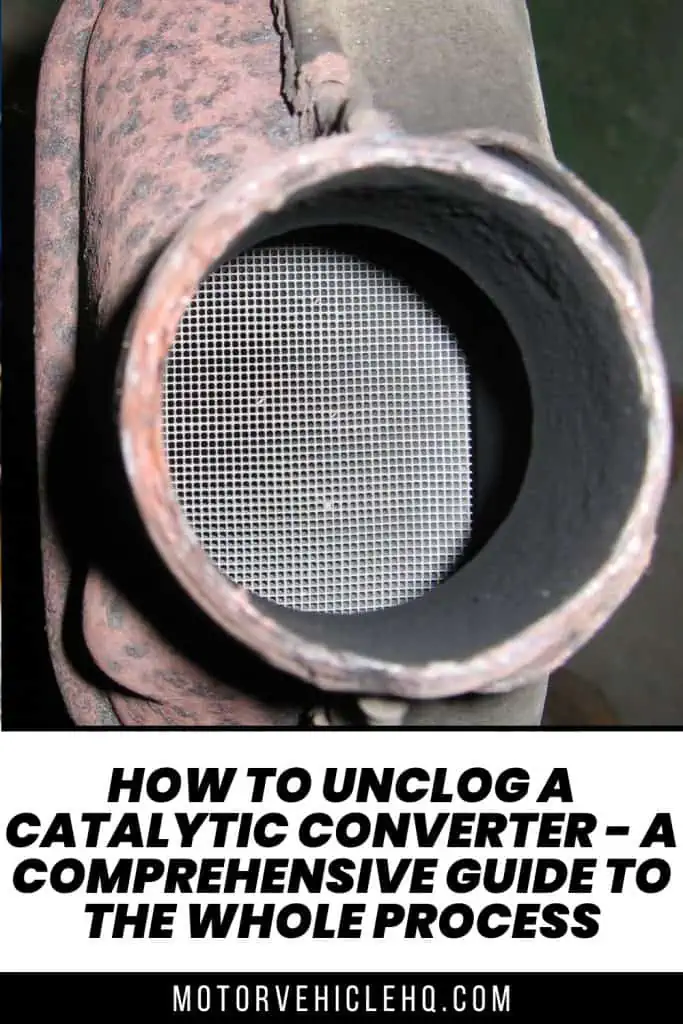
Honeycombs of an exhaust catalytic converter by The RedBurn / CC BY-SA 3.0

Jim Wicks is the founder of MotorVehicleHQ. With over two decades of experience in the automotive industry and a degree in Automotive Technology, Jim is a certified car expert who has worked in various roles ranging from a mechanic, car dealership manager, to a racing car driver. He has owned more than 20 cars over the past 15 years. Ask him about any vehicle you see on the road and he can tell you the make, model and year. He loves the aesthetics of all things cars, and keeps his vehicles in pristine condition.
In his free time, Jim enjoys getting his hands dirty under the hood of a classic car or taking long drives along the country roads. His favorite car? A 1967 Shelby GT500, a true classic that, according to Jim, “represents the pure essence of American muscle.”

